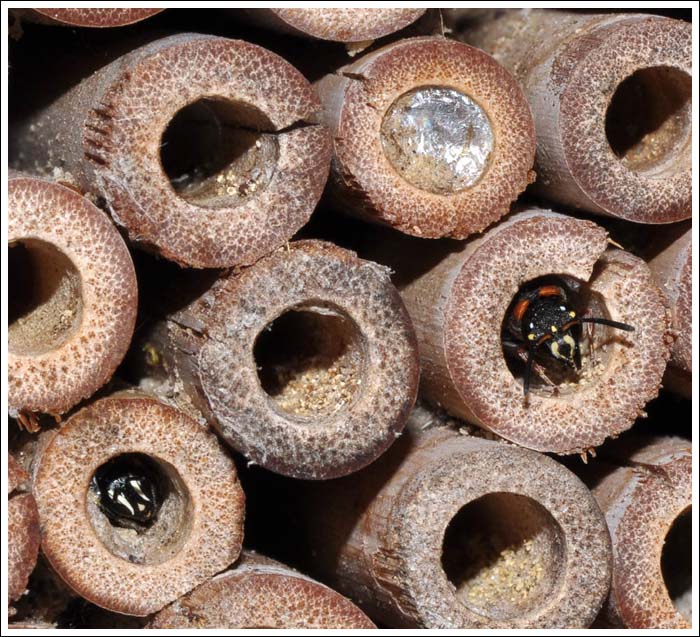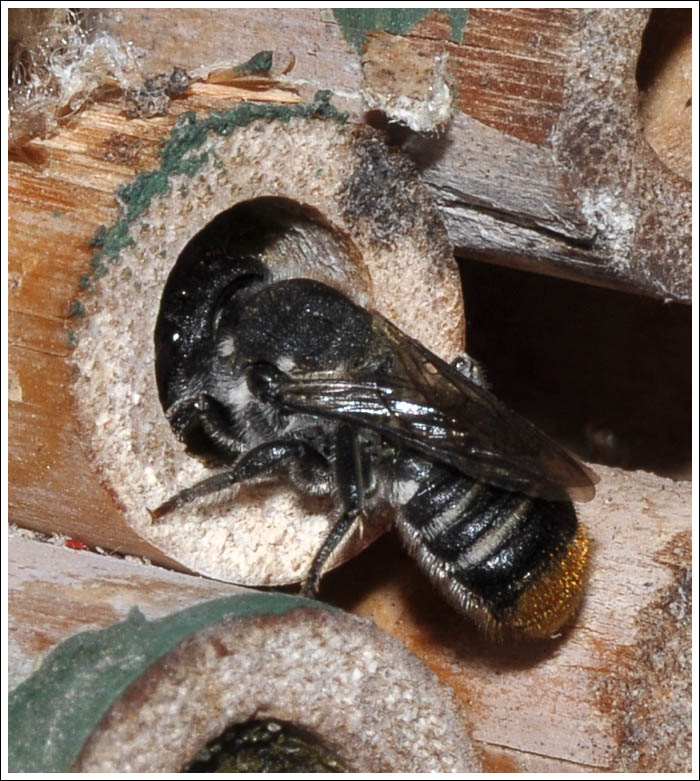Photographing insects is often a challenge, they can be very wary, and to add to that, whatever they are sitting on can be moving in the wind. This Drone Fly, Eristalinus species, can be quite cooperative though, and in the effort to get better images it is photographed quite often. On this occasion there was only a slight breeze, and the subject was so intent on feeding that it virtually ignored the close proximity of the camera lens, resulting in good detail.
A small Bee Fly was much more wary and allowed only limited scope for photos.
Click to enlarge.















